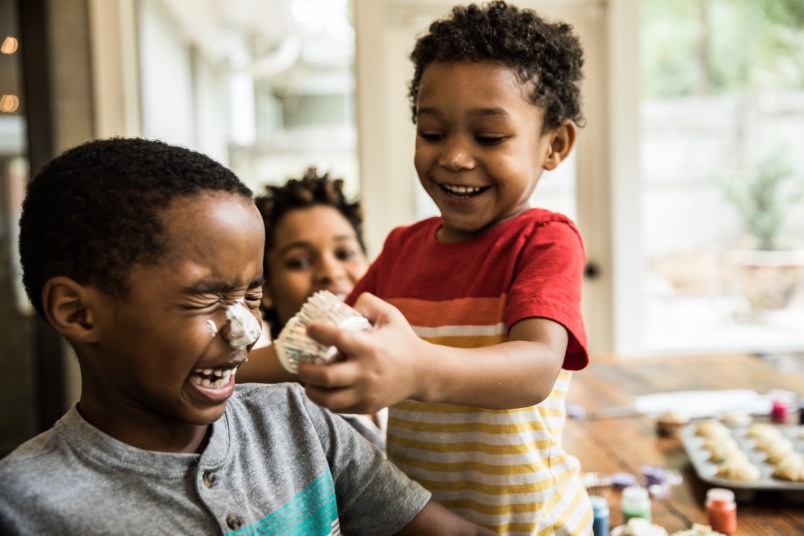How to Teach Your Kids to Be Kind

After a year of tumultuous global politics (to say the least), the ongoing refugee crisis in Syria, and the rise of cyberbullying, it feels more important than ever that we teach our children — our most vulnerable citizens, but also our best hope for the future — to be kind. But in a world awash with cynicism and apathy, how the heck are we meant to do that?
Kindness begins at home according to clinical psychologist Jocelyn Brewer. “Yes, it’s important to think about global events and to teach our kids perspective, but the easiest and most effective way to teach kindness is by modeling it ourselves.”
Easier said than done particularly when you’re overworked, stressed, sleep-deprived, and perhaps not feeling too kindly yourself. “This is where it helps to remember that you’re the adult,” says Jocelyn, laughing. “We are the older, wiser, more emotionally regulated humans who have the mental resources to take the proverbial deep breath and model the target behaviors we want to see in our family, and also the wider community.”
And while sometimes being kind is the very last thing we feel like doing, says Jocelyn, it is actually at moments like these when it’s most important. “It’s all well and good to be a good person when you’re feeling up for it,” she says, “but we need to teach our kids that this is the way we want them to be all the time. So we have to step up to the plate, too.”
Teaching kindness doesn’t need to be difficult. It’s really about being observant, says Jocelyn. “Look around when you’re out and about,” she says. “It’s important to teach kids to notice situations outside of themselves, like an elderly man who needs help with his groceries, or a mom with a newborn who looks like she could use a hand getting into her car.” And don’t discount the power of everyday interactions, says Jocelyn. “Practice looking people in the eye and smiling or giving ‘kind-eyed’ looks,” she says. “Create a habit of saying hello to people, like preschool teachers, baristas, and shop assistants. This is one of the smallest but most powerful acts of kindness.”
On a more macro level it’s important to teach kids about the world around them, too. “Read books about other countries and other people’s experiences,” says Jocelyn. “Give your kids context to understand that not everybody lives the way they do, and you’ll be surprised by how quickly they build a sense of empathy.”
Encourage discussion about these issues, says Jocelyn, and have your kids offer solutions. “A friend of mine did the Ration Challenge, where you eat the same food in the same portions as Syrian refugees for a week. She explained it to her young twins, who were inspired to do their own mini-version of the challenge, and raise funds.”
That said kindness shouldn’t be an exceptional event, like donating money or doing a special activity. “Kindness should be part of your everyday life,” says Jocelyn. “And the best way to teach your kids that is to do it yourself.”
Example
When husband and wife Derek and Jen Woodgate saw a documentary about the devastating impact of hunger on millions of children around the world, they were inspired to do something to help make a real difference. In response, they started Cuddle + Kind, a business that creates hand-knitted dolls, such as Noah the dog (top). For every doll sold they give 10 meals to children in need. Not only that, but the dolls are also created by skilled female artisans in Peru who receive a sustainable, fair trade income for their work. In this way, Derek and Jen are living their values and modeling them to their three young children. To buy a doll or for more information, visit cuddleandkind.com.
This article originally appeared on our sister site, Homes to Love.
















